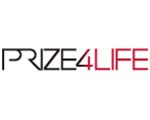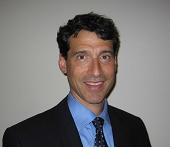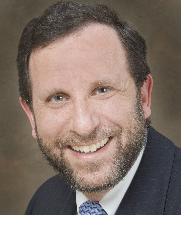Preliminary Biomarkers for a Fatal Degenerative Disease
Published Dec-01-09Breakthrough:
The identification of preliminary biomarkers to measure disease progression in ALS, a rapidly progressive neurodegenerative order that can kill within 2-5 years of the first symptoms appearing.
Company:
Seward Rutkove and Dr. Harvey Arbesman, United States
The Story:
 Prize4Life, a nonprofit organization dedicated to finding new cures and treatments for ALS (amyotrophic lateral sclerosis, also known as Lou Gehrig's disease) has turned to open innovation to speed up the drug discovery process.
Prize4Life, a nonprofit organization dedicated to finding new cures and treatments for ALS (amyotrophic lateral sclerosis, also known as Lou Gehrig's disease) has turned to open innovation to speed up the drug discovery process.Million Dollar Prize Fund
ALS is a form of motor neuron disease, a progressive illness that affects nerve cells in the brain and the spinal cord. Its underlying mechanisms are poorly understood and there is no known cure. Prize4Life has established a $1 million dollar prize fund and created several challenges on InnoCentive’s website. Although the organization believes that the inducement prize model is unproven in the medical field they have turned to open innovation because of the immediate access it offers to a diverse pool of international competing teams.
Biomarker Challenge
A challenge was set up in 2008 to find a biomarker for ALS. A biomarker is a characteristic indicator of a biological state, diseased or otherwise. At the moment there is no precise measure of ALS disease progression and so it cannot be monitored, nor can an assessment be made to see how well a treatment is progressing. If a biomarker can be found it will reduce the time and cost of clinical trials, encourage more companies to hold them and thereby speed up the rate of drug development.
This particular challenge attracted 1000 teams who reviewed the prize criteria, and eventually a total of 12 submissions were received from seven different countries.
Winning Solvers
The prize was awarded to two solvers, one of whom is Seward Rutkove, MD, an ALS researcher from the Beth Israel Deaconess Medical Center in Boston. His proposed biomarker is based on the observation that electrical current flows differently through healthy and diseased muscle tissue. His team is developing Star Trek-like technologies which are capable of detecting and measuring these changes in current flow and correlating them with disease progression in ALS patients.
The other winning solver was Dr. Harvey Arbesman, a dermatologist with no previous ALS research background. He was able to interpret a well known clinical observation that patients with ALS do not develop bed sores into the discovery of a skin-based biomarker. His team looked at a device called a Cutometer that is widely used in the cosmetics industry to measure skin elasticity. The researchers adapted it so that it could correlate changes in elasticity with disease progression in people with ALS.
“If this challenge hadn’t been issued, there is little chance I would have even pursued this idea,” said Dr. Harvey Arbesman on hearing of his award. “This approach has been an effective way to get people across disciplines, from all around the world to think about ALS and has been an effective way to tap new perspectives from outside the field.”
However, despite the success of the two solvers the challenge wasn’t completely solved so they were each awarded a Progress Prize as they got very close to fulfilling all the challenge criteria. They shared $100,000 for their efforts.
Essentially the two solvers came up with preliminary biomarkers; it was felt that they needed more data to validate their results. However, their findings so impressed the scientists at Prize4Life that they have made them known to the wider ALS research community to encourage further open innovation research and collaborations.
The Next Challenge
The challenge to find a novel biomarker rolls on and there is still $1 million worth of prize money up for grabs. Considering the huge progress that has been made so far the scientific advisory board at Prize4Life feels that it will have a novel biomarker within the next two years.
Next Story »


